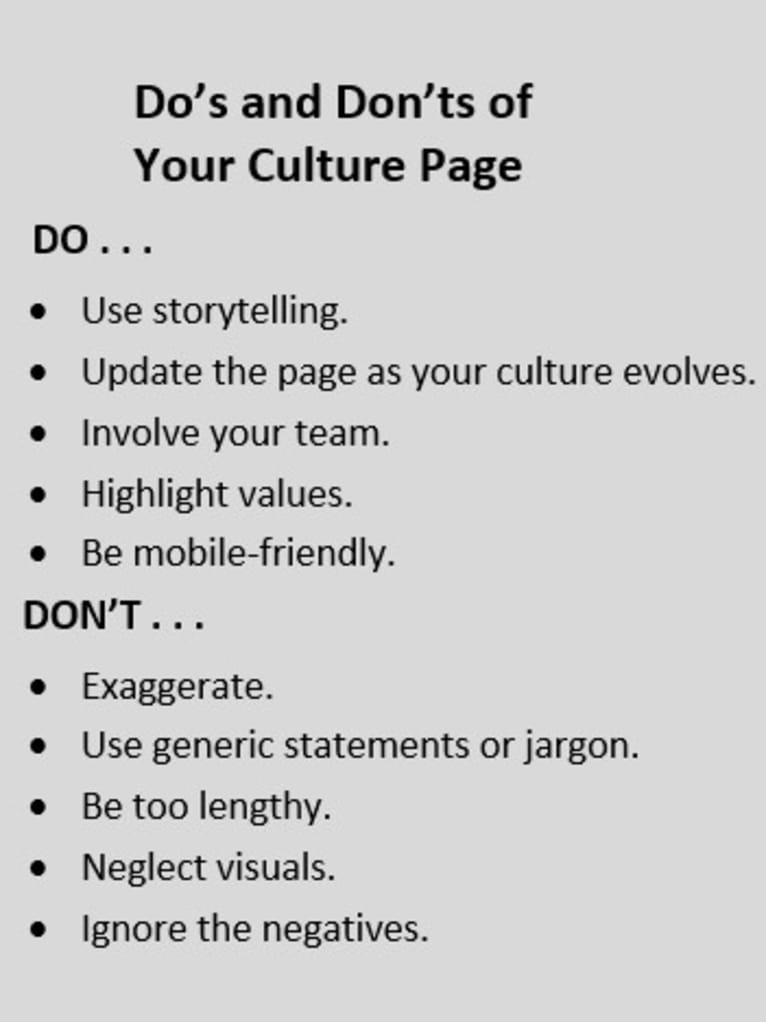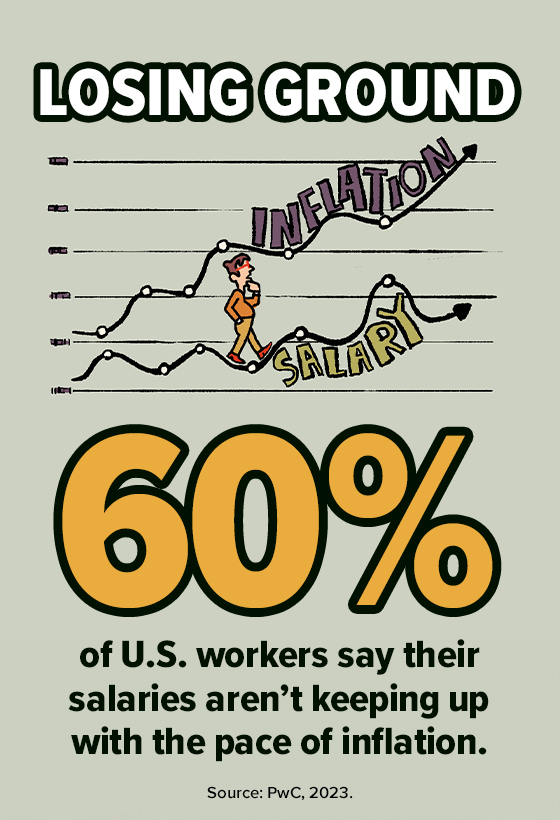
The culture page on your website is the pinnacle of branding. It is where the heart and soul of your organization lives. By reflecting your values and culture, you can convert your company from a static entity into a brand with a vibrant personality and a unique story to share.
A compelling culture page includes your company's mission and principles and a celebration of the people who breathe life into it—all the while leveraging the power of storytelling to resonate and connect with audiences. It can be a powerful recruitment tool, showcasing the working environment, highlighting key leadership and fostering potential candidates' trust in your brand and its values.
Why a Great Culture Page Matters
Creating a compelling culture page allows you to:
Establish trust in your brand. Your employees are your first customers—and you need to win them over. By showing that your organization aligns with their values and beliefs, you can create a sense of belonging and boost job satisfaction. Over the long term, this establishes employee loyalty and improves average tenure. When your culture page reveals a workforce with lengthy tenures, it sends a powerful message about the company's positive culture and work environment, strengthening its reputation and brand trustworthiness.
Your culture page should also introduce the leaders and key figures in your company, along with their credentials and backgrounds. When employees and potential candidates see the experienced and capable people guiding the strategic direction, they view the organization as more credible and authentic.
Attract the right talent. Your organization must identify who is a cultural fit. As you showcase your company culture and the type of people who thrive in the organization, you can attract applicants with a stronger cultural fit. A culture page ultimately filters out candidates who do not align culturally, which allows you to reduce turnover and hiring costs.
According to SHRM, the average cost per hire is around $4,700, and the average time to hire around 44 days. Identifying who is a cultural fit helps you avoid pouring resources, budget and time into interviewing, hiring and onboarding candidates who will not fit your organization.
Build a strong brand identity and personality. In every company, it is important to identify core values, principles and, ultimately, personality. Your company's culture page plays a major role in transcribing that personality into a compelling narrative, one that highlights the people and stories that make up the brand.
In today's competitive market, having a clearly articulated company culture and story will differentiate your organization, attracting customers who resonate with your values. According to a study by Label Insight, 94 percent of consumers are more inclined to remain loyal to a brand that wholeheartedly embraces transparency.
Set applicant expectations. Your company's internal process is a black box to the outside world. Companies need to show the hiring process before someone applies. Follow industry standards and employ the terminology commonly used for the specific job or field. Do not assume there is a common source of knowledge for positions, titles or hiring timelines. Explain the role and its responsibilities clearly, allowing applicants to know exactly what is expected of them.
By properly including all necessary information, you ensure a positive candidate experience, which, according to a Talent Board survey, makes candidates 38 percent more likely to accept a position and 41 percent more likely to recommend your company.
Common Culture Page Mistakes
It's easy to make costly errors when crafting a culture page on your site. Here are a few to watch out for:
Focusing exclusively on perks. Showcasing splashy perks like ping-pong tables, free snacks and casual dress codes is not a sufficient way to convey your culture. While these are elements, culture goes deeper.
Being static and unchanging. Do not treat the culture page as a static document. Rather, it should reflect an evolving culture. Company cultures change over time, and it is important to keep the culture page up-to-date.
Neglecting remote or hybrid work culture. Many companies have remote or hybrid teams. Ignoring this aspect of your culture can make it seem out of touch with the current work environment.
Overemphasizing diversity and inclusion statements. While it is crucial to highlight diversity and inclusion efforts, merely having a statement or posting stock photos of employees from diverse backgrounds comes off as insincere. To demonstrate real commitment, mention concrete strategies, actions and results.
Being too broad. Doing so comes off as less authentic. To create a genuine connection with audiences, avoid the temptation to keep things vague. Instead, incorporate specific experiences and insights from current employees. You can answer any negative views about the company, but not directly. We all know the horrifying Glassdoor stories, so consider this page a way to communicate your point of view.
7 Elements That Highlight Your Culture
Here are elements to include on your site that build a compelling story about your organization's culture. Remember, you don't have to limit this to one single "Company Culture" webpage. Your culture is multifaceted, and compressing it into one page may cause oversimplification. Feel free to dedicate separate pages to the different aspects of your organization.
1
- Define the "why." Interview executives, team members and stakeholders, asking them to explain the purpose and mission of the company. Including this on your culture page helps visitors understand why your organization exists, what problems it aims to solve and what it hopes to achieve.
- Identify who is a good fit. Describe the characteristics, traits and qualities you value in employees. Explain what it means to be a good cultural fit for your organization, in terms of both skills and behaviors.
2. Business Philosophy
- Explain how the work is done. Provide insights into your work environment, processes and methodologies. Explain how projects are managed, how decisions are made and how collaboration happens. Consider including materials and equipment provided and used on the job.
- Dive into diversity. Share your efforts, programs and results related to creating a diverse and inclusive workplace.
3. Leadership
- Introduce key leaders. Include profiles, photos and a brief background on each leader. This helps visitors get to know the people steering the company.
- Include messages or letters from top leadership. Add a personalized touch from leaders such as the CEO or the chief diversity officer.
4. Hiring Process
- Outline the steps. Explain the process a candidate will go through when applying. This helps manage expectations, providing clarity and transparency.
- Add links to open positions. Include direct links to your current job openings, making it easy for interested candidates to explore and apply for relevant positions.
5. Work Environment
- Include rewards and recognition. This can include details about compensation, benefits and any unique perks or recognition programs.
- Highlight employee development. Explain how leadership encourages employees to develop, upskill and share their feedback.
6. Frequently Asked Questions
- Anticipate common questions. Answer potential questions job seekers or visitors might have about your company's culture and practices, and provide answers in a dedicated FAQ section.
- Remove objections. Address any concerns or objections that potential candidates may have. This could include issues related to work/life balance, company values or growth opportunities.
7. Social Media Links
- Provide direct links to your company's social media profiles. This allows visitors to explore your culture through real-time updates, employee stories and engagement with the company's online community.








